Homeworld 3 performance analysis: Surprisingly scalable but no ultra-high frame rates
Even old CPUs will run it well enough, provided they can handle six or more threads.

It's been over twenty years since the last Homeworld game was released (and eight years since the remastered versions) but at long last, the next chapter in the 3D RTS-in-space series is now upon us. Homeworld 3 has been delayed a few times so expectations have been high as to how good the game is and how well it runs on today's PCs.
Developers Blackbird Interactive issued PC system requirements last year but updated them fairly recently, and along with a multiplayer demo, we've had a good idea as to what to expect in terms of performance. For the past two weeks, I've been testing a pre-release version of the full game across a variety of gaming PCs, in both single-player and multiplayer maps, to see what kind of hardware you need to enjoy Homeworld 3.
The game has a built-in benchmark that provides an overview of how hard your CPU and GPU are working, during a short but intense space battle. So, without further ado, let's start by checking out how the tested PCs fare in this benchmark.
There are four graphics quality presets: low, medium, high, and epic. Using any of the first three will automatically enable upscaling. Depending on your graphics card, it will default to DLSS for Nvidia GPUs, FSR for AMD, and XeSS for Intel (though you can override these). In my testing, I forced upscaling off but set the render resolution to 100% to give the clearest picture of the GPU load.
Homeworld 3 benchmark performance
As you can see, with the low preset, changing the overall resolution resulted in relatively minor changes in the average and minimum frame rates. However, there's an immediate drop in performance at medium or high settings, though changing the resolution still doesn't hurt matters too much. Only when using the Epic quality preset do we see frame rates decrease significantly.
I'll come to the real culprit behind this later when I go through the best settings to use in Homeworld 3. For now, let's just focus on what's going on with the benchmark—initially, there's very little going on in the battle and for the initial third of the test run, the frame rates are quite high across the board.
Then, once the screen is filled by ships and cannon fire, the frame rate drops to a steady but relatively low rate. Even with a Core i7 14700KF and RTX 4080 Super, the average frame rate fell below 30 fps, so it's best to view the benchmark as being a worst-case scenario in terms of workload.
The biggest gaming news, reviews and hardware deals
Keep up to date with the most important stories and the best deals, as picked by the PC Gamer team.
The benchmark indicates where the test run was CPU or GPU-limited, but I'm not convinced it's completely correct—or rather, not in the sense that most people would expect. Here's an example of a 1080p low settings run, on the 14700KF system.
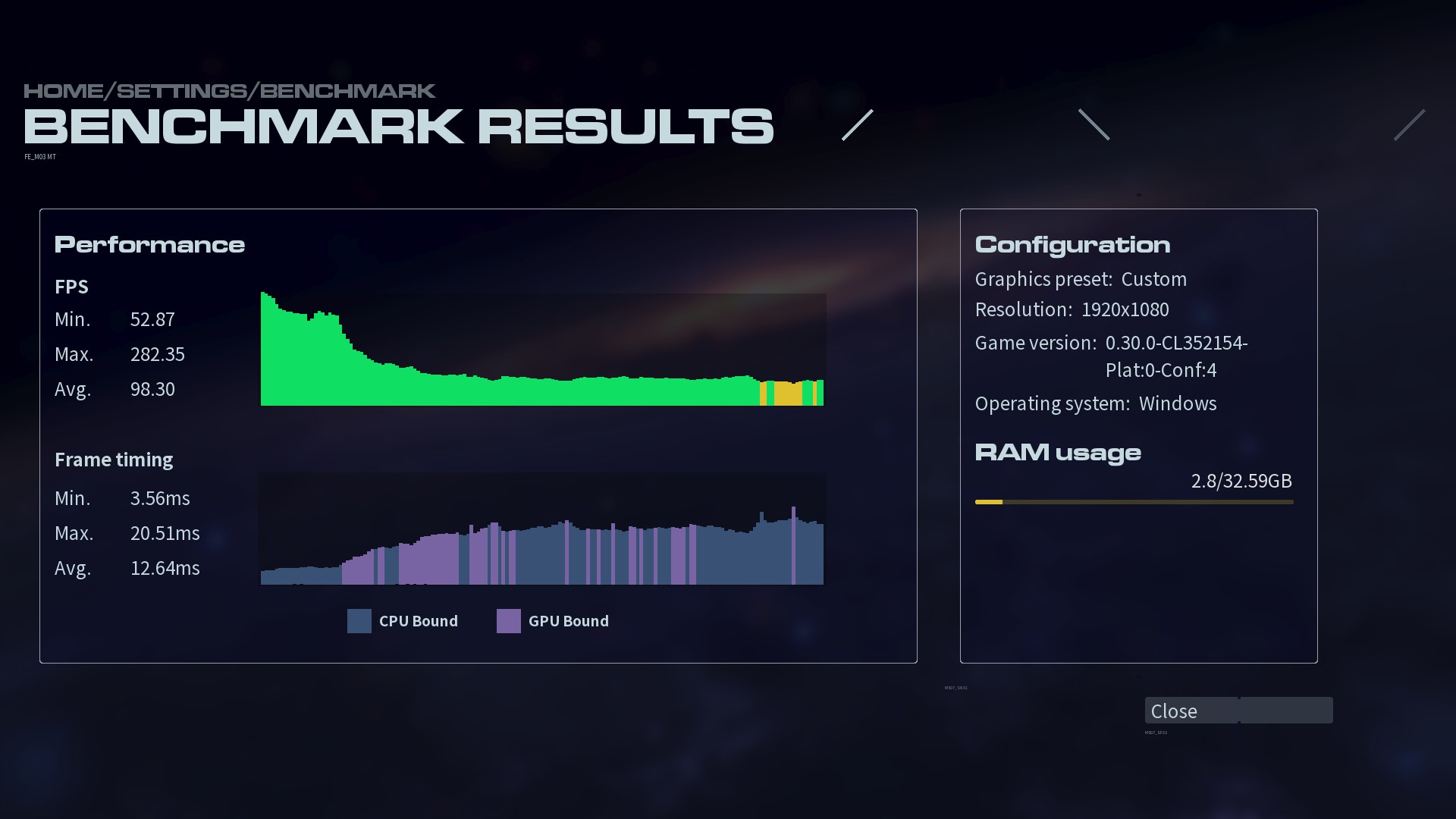
Note how for the early stages of the run, the frame times are marked as being GPU bound. What's going on there is that there's very little work for the CPU to do in the early stages, so the bulk of the overall frame time is down to the GPU. So while that technically does mean the benchmark was GPU-bound at that time, it's more a case that the whole PC just doesn't have much work to process.
On a quick side note, the RAM usage counter often showed bizarre figures (such as the 2GB shown above) but its inclusion is very puzzling. Surely a VRAM counter would be of more use? At 4K Epic quality, I recorded a VRAM peak usage of 9.2GB which could potentially cause a few issues for 8GB graphics cards, so keeping track of how much video memory is required is far more important than system RAM usage.
Homeworld 3 CPU and GPU balance
I used Intel's PresentMon tool to independently record the frame times and it paints a somewhat different picture to Homeworld 3's built-in benchmark. Here you can see that the CPU is busier for longer than the GPU, throughout the whole test run, and the latter has to wait longer, too.
Homeworld 3 will ask a lot of your central processor but you don't need one of the best gaming CPUs to enjoy the game. All you need is one with six cores and 12 threads, as the engine doesn't generate dozens of heavy threads—you won't see any significant scaling beyond eight cores, as shown below.
These figures were obtained from a 5-minute sample of a single-player level, rather than the benchmark, but the data show that the game only generates six to eight threads of note. There are more than that being generated, but they contain very short workloads.
In short, Homeworld 3 likes modern CPU architectures and high clock speeds, rather than lots of cores, and while the game ran perfectly well on the Core i5 9600K gaming PC at 1080p low settings, you'll get the best experience with something that's within a generation or two of the latest processors.
The GPU only becomes important once you ramp up the quality settings, adding better lighting effects, higher resolution textures, and nicer space backgrounds.
Homeworld 3 in-game performance
Built-in benchmarks aren't the same as the full game, though, so it's time to dig into that. Running through the first few levels of the single-player campaign sometimes showed frame rates similar to those seen in the benchmarks, but generally, the performance was better.
Homeworld 3 likes modern CPU architectures and high clock speeds, rather than lots of cores
However, the frame rate was rarely smooth, even on the most powerful of the gaming PCs used. Transitioning between the tactical and normal views often resulted in spikes in the frame rate, especially when using the High or Epic quality settings.
One issue with 3D RTS games is the frame rate will always bounce around, as the camera whips around the environment. Close-up views of multiple objects will make it more GPU-limited, whereas zooming out and taking in a wider view of a complex battle will shift everything toward the CPU.
To generate a more controlled environment, I set up a skirmish match between two teams of two AI players (plus myself, as a casual bystander). I let the battle run for 8 minutes before recording the average and 1% low frame rates over 60 seconds.
Where the 14700KF gaming PC had issues with its minimum frame rates in the built-in benchmark, compared to the other systems, the skirmish test showed no such problems. At low/medium quality settings and resolutions, the Ryzen 5 5600X and RTX 4070 test benchmark performed just as well as the Ryzen 9 7900 and RX 7800 XT systems.
The lengthy battles were quite similar to the benchmark, in that the frame rate starts very high, then slowly drops to a steady level once the firefights are in full swing. Multiplayer matches are generally more balanced between the CPU and GPU, even at 1080p low settings.
However, all of the tested graphics cards had little to do with such a configuration, to the point that, due to their low utilisation, most of the GPUs ran with clock speeds 800 to 1,000 MHz lower than their rated boost levels. That's not ideal and could explain why the frame rate in single-player levels varies so much. Only when using High or Epic quality settings does the GPU work to its full potential and although the frame rates aren't great with such graphics, it is a lot smoother.
Homeworld 3 best settings
3D RTS games aren't expected to reach the same fps levels as a competitive shooter, but if you were hoping for 144 fps or more, then you're going to be disappointed. Fortunately, getting a reasonably steady 60 fps, even on old hardware, is quite easy to achieve.
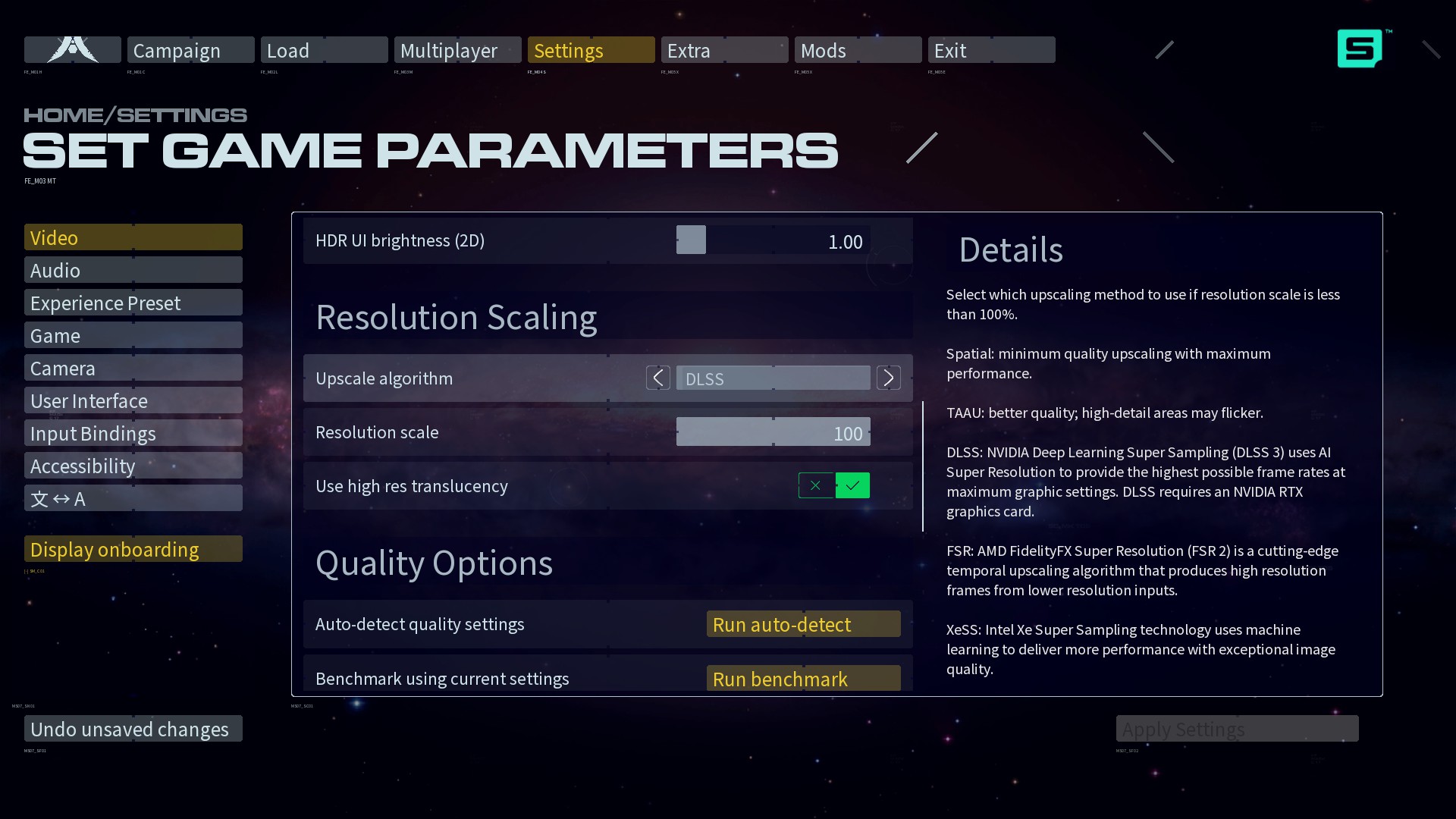
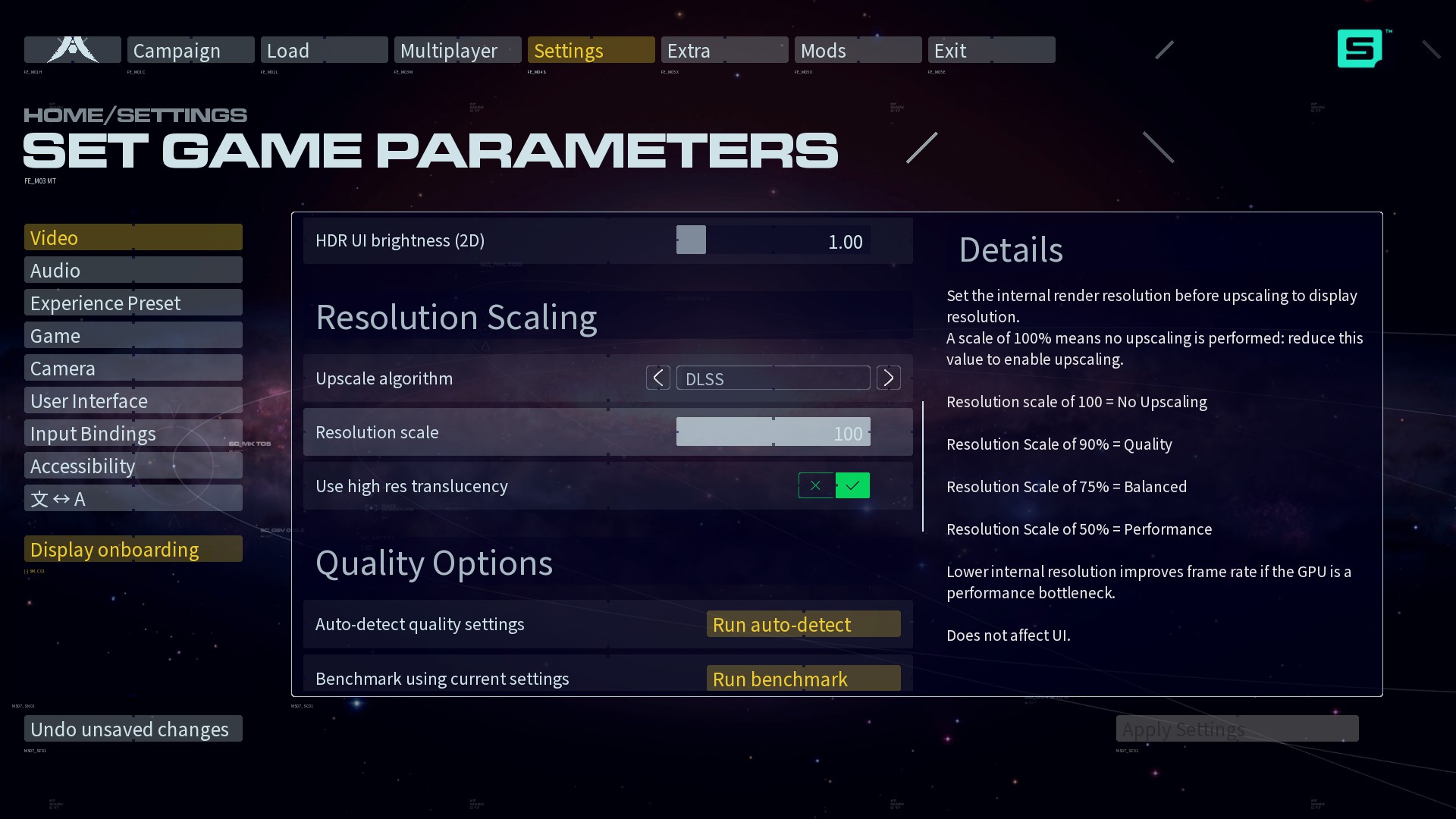
Homeworld 3 isn't replete with astounding graphics and the relative lack of visual difference between High and Epic quality settings means the latter isn't worth using. Neither is the use of ray-traced shadows, even though it barely causes any noticeable hit in performance, regardless of the GPU used.
Just stick with Medium for older or lower-spec hardware, and High if you've got more recent/capable components. You'll get the best balance of performance and graphics with those presets.
I also recommend that you don't bother with upscaling, unless you're playing Homeworld 3 at 4K with the Epic quality preset. Most of the time, it simply doesn't alter the overall performance very much because the game's frame rate is mostly determined by the CPU.
So why the developers choose to have it forced on when using most of the quality presets is rather odd. Forcing a 50% resolution scale when using Low is, to be frank, absurd. At 1080p, it makes the graphics look blurry and indistinct, and that's the kind of monitor a PC gamer will have if they're going to be using Low settings.
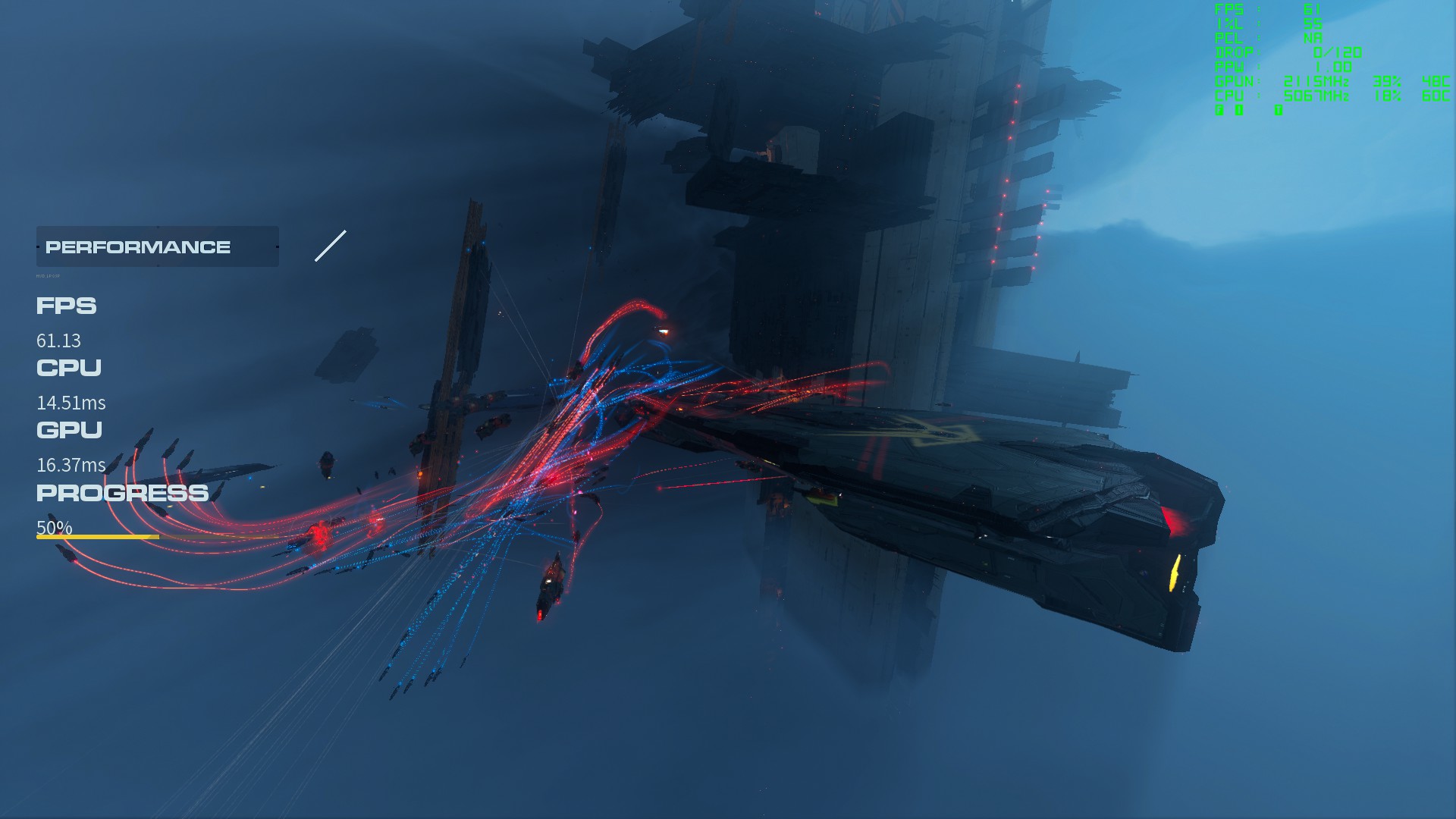
1080p Low quality preset (100% res scale)
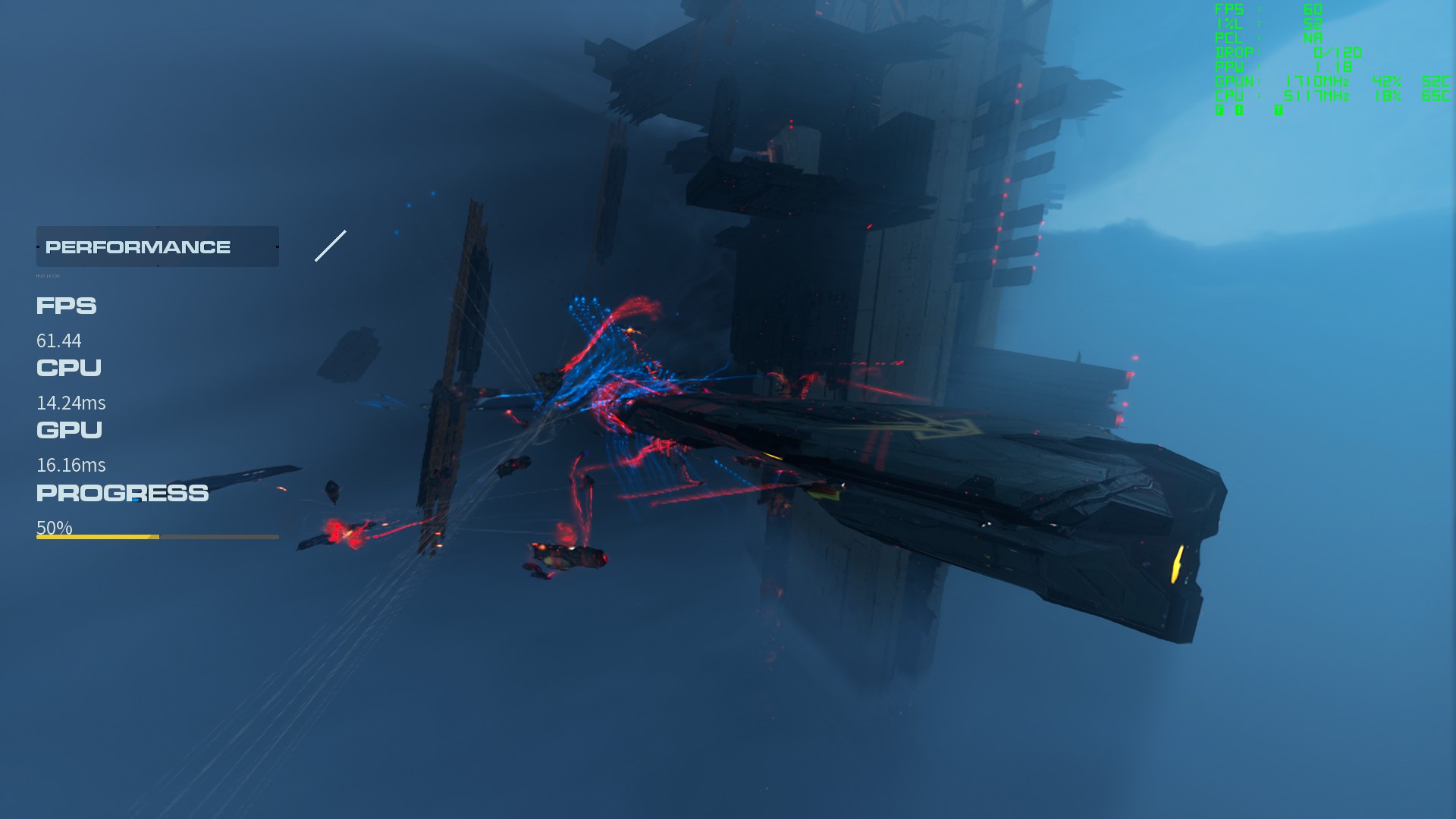
1080p Low quality preset (default DLSS 50% res scale)
The only quality preset to not force upscaling is Epic quality, which is the one that needs it most. Low and Medium presets shouldn't be using upscaling at all and the game's menu doesn't use the usual settings that other games employ for upscaling, making it less than obvious how to disable it (just set the resolution scale to 100%).
It's possible the developers chose to implement upscaling by default to ensure the game is always CPU-bound, but I found it was mostly like that in my testing anyway (recall that upscaling was not used for any of the performance tests).
What the game really needs is a frame generation option, for those wanting high frame rates, and the implementation of AMD Anti-Lag+ and Nvidia Reflex Boost to prevent the GPU from running too slowly at low settings. It could also do with an option to raise the resolution scale greater than 100% to get smoother-looking graphics.
Homeworld 3 has been in development for many years, initially starting in 2017 before going through a Kickstarter fund-raising campaign, and then a multitude of delays. This is why Unreal Engine 4 powers the game, rather than the latest version, and perhaps goes some way to explain the inconsistent performance.
Credit where credit is due, though, as Blackbird Interactive has created a game that can be enjoyed on a range of gaming PCs, rather than demanding the very best and most expensive hardware. Just don't expect ultra-high frame rates and you'll be fine.

Nick, gaming, and computers all first met in 1981, with the love affair starting on a Sinclair ZX81 in kit form and a book on ZX Basic. He ended up becoming a physics and IT teacher, but by the late 1990s decided it was time to cut his teeth writing for a long defunct UK tech site. He went on to do the same at Madonion, helping to write the help files for 3DMark and PCMark. After a short stint working at Beyond3D.com, Nick joined Futuremark (MadOnion rebranded) full-time, as editor-in-chief for its gaming and hardware section, YouGamers. After the site shutdown, he became an engineering and computing lecturer for many years, but missed the writing bug. Cue four years at TechSpot.com and over 100 long articles on anything and everything. He freely admits to being far too obsessed with GPUs and open world grindy RPGs, but who isn't these days?

